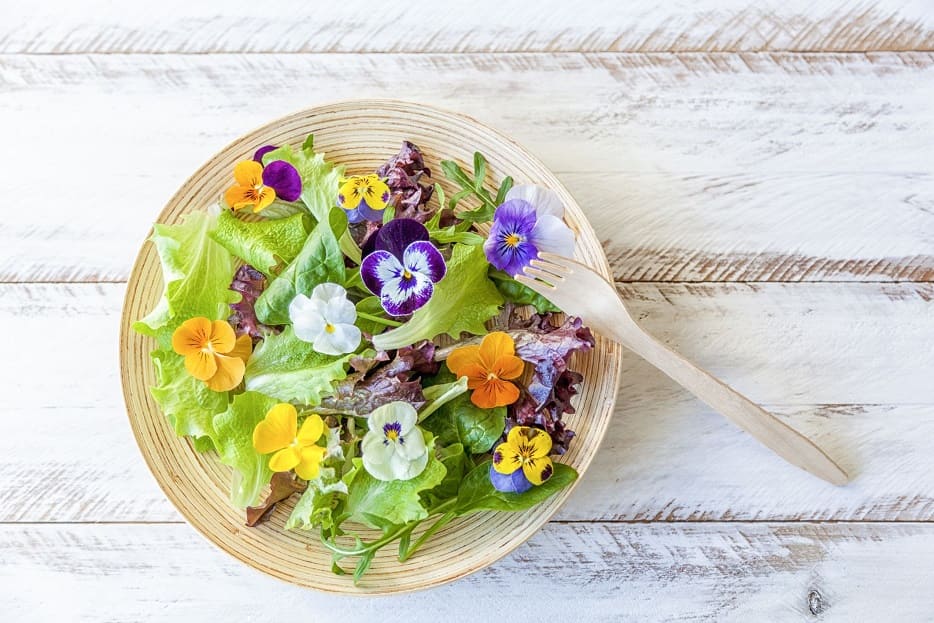“Grandma always said the prettiest things in life were often the most useful too.”
I still remember the first time I nervously plucked a pansy from my grandmother’s garden and popped it into my mouth at age seven. The mild, grassy flavor surprised me—it wasn’t the explosion of floral perfume I’d expected, but something subtle and delightfully earthy.
That moment sparked a lifelong fascination with edible flowers that has transformed both my garden and my cooking.
What started as childhood curiosity has evolved into a passion that brings magic to my dinner table year-round. From the peppery kick of nasturtiums in summer salads to the apple-sweet chamomile tea that soothes winter evenings, edible flowers have become my secret weapon for creating memorable meals that surprise and delight guests.
In this comprehensive guide, you’ll discover everything you need to know about growing, harvesting, and cooking with edible flowers—turning your garden into a gourmet paradise and your kitchen into an artist’s studio.
Read The Ultimate Comprehensive List of Flower Names From A-Z
The Ancient Art of Flower Cuisine
Edible flowers aren’t just a modern culinary trend—they’re a timeless tradition spanning thousands of years and countless cultures. Ancient Chinese cooks were experimenting with flower-infused dishes as far back as 3,000 BCE, while Romans incorporated violets and roses into their elaborate feasts.
In medieval Europe, monasteries cultivated gardens specifically for edible flowers, using them both as medicine and sustenance.
Today, this ancient practice is experiencing a remarkable renaissance. Top chefs worldwide are rediscovering the unique flavors, stunning visual appeal, and nutritional benefits that edible flowers bring to modern cuisine.
But you don’t need a Michelin-starred kitchen to join this floral revolution—your own backyard can become a treasure trove of culinary possibilities.
Safety First: Essential Guidelines for Edible Flower Enthusiasts
Before we dive into the colorful world of edible flowers, let’s address the elephant in the room: not all flowers are safe to eat. Some are merely unpalatable, while others can be genuinely dangerous. Here are the non-negotiable safety rules every edible flower enthusiast must follow:
The Golden Rules of Flower Safety
- When in doubt, don’t eat it. This simple rule has saved countless flower foragers from unpleasant—or dangerous—experiences. Only consume flowers you can identify with 100% certainty.
- Source matters tremendously. Never harvest flowers from:
- Roadsides (contaminated with exhaust fumes and road salt)
- Florists or garden centers (typically treated with pesticides)
- Public parks or spaces (often chemically treated)
- Areas frequented by pets or livestock
- Know your body. If you have pollen allergies, approach edible flowers with extra caution. Start with tiny amounts and monitor your body’s response. Remove stamens and pistils from larger flowers to reduce pollen exposure.
- Eat only the right parts. Generally, stick to petals only. Remove the bitter white “heel” at the base of petals, along with stems, leaves (unless specifically noted as edible), and reproductive parts.
Find out Should You Let Garlic Flower? Pros & Cons Explained
Absolutely Avoid These Toxic Flowers
Never consume these poisonous flowers under any circumstances:
- Daffodils and narcissus (contain toxic lycorine)
- Foxglove (affects heart rhythm)
- Oleander (highly toxic—even one leaf can be fatal)
- Rhododendron and azaleas (contain grayanotoxins)
- Larkspur (fast-acting alkaloids)
- Lily of the valley (contains cardiac glycosides)
- Hydrangea (contains cyanide compounds)
- Sweet pea (different from edible garden peas)
The Edible Flower Hall of Fame: 25 Must-Grow Varieties
After years of experimentation and countless conversations with fellow flower enthusiasts, I’ve compiled this definitive list of the most rewarding edible flowers for both novice and experienced gardeners.
Beginner-Friendly Favorites
1. Nasturtiums (Tropaeolum majus)
Flavor Profile: Peppery, watercress-like
These cheerful climbers were my gateway into serious edible flower gardening. Every part is edible—flowers, leaves, even the green seeds (which make excellent caper substitutes). The flowers come in vibrant oranges, reds, and yellows, adding instant drama to salads. I love how they self-seed throughout my garden, creating surprise pops of color in the most unexpected places.
Growing tip: Nasturtiums actually prefer poor soil—too much fertilizer results in abundant foliage but fewer flowers.

2. Pansies and Violas (Viola species)
Flavor Profile: Mild, grassy, slightly minty
These “faces in the garden” are remarkably hardy and bloom in cool weather when most other flowers have given up. Unlike many edible flowers, you can eat the entire pansy—no need to remove parts. I keep a container of mixed viola colors on my kitchen counter specifically for garnishing everything from cocktails to birthday cakes.
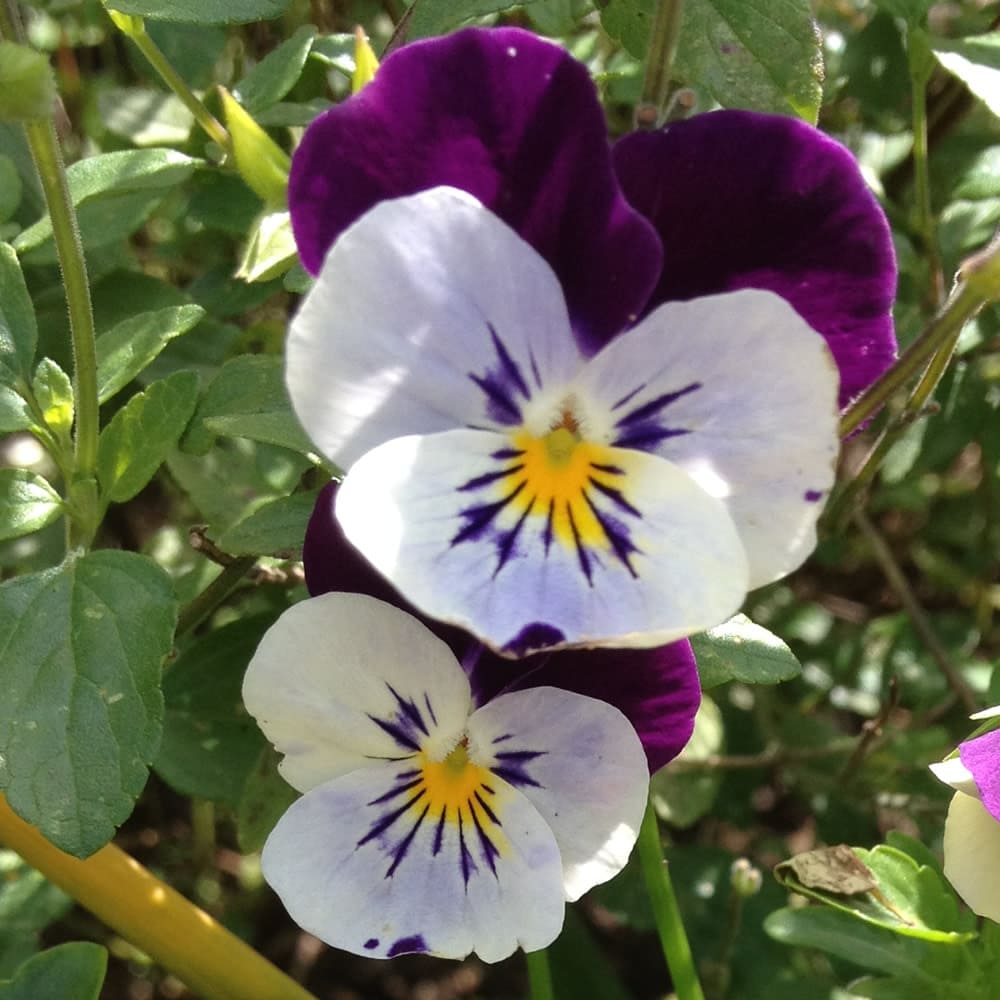
Personal memory: My daughter’s fourth birthday cake was decorated entirely with purple pansies we picked together that morning. She still requests “flower cakes” years later.
Here’s How to Grow Pansies from Seed With A Complete Guide for Vibrant Spring Gardens
3. Calendula (Calendula officinalis)
Flavor Profile: Mildly bitter, slightly peppery
Often called “poor man’s saffron,” calendula petals impart a beautiful golden color to dishes. These workhorses bloom continuously from early summer until hard frost, providing a steady harvest. I pinch off the petals and sprinkle them over rice dishes, soups, and salads for both color and subtle flavor.
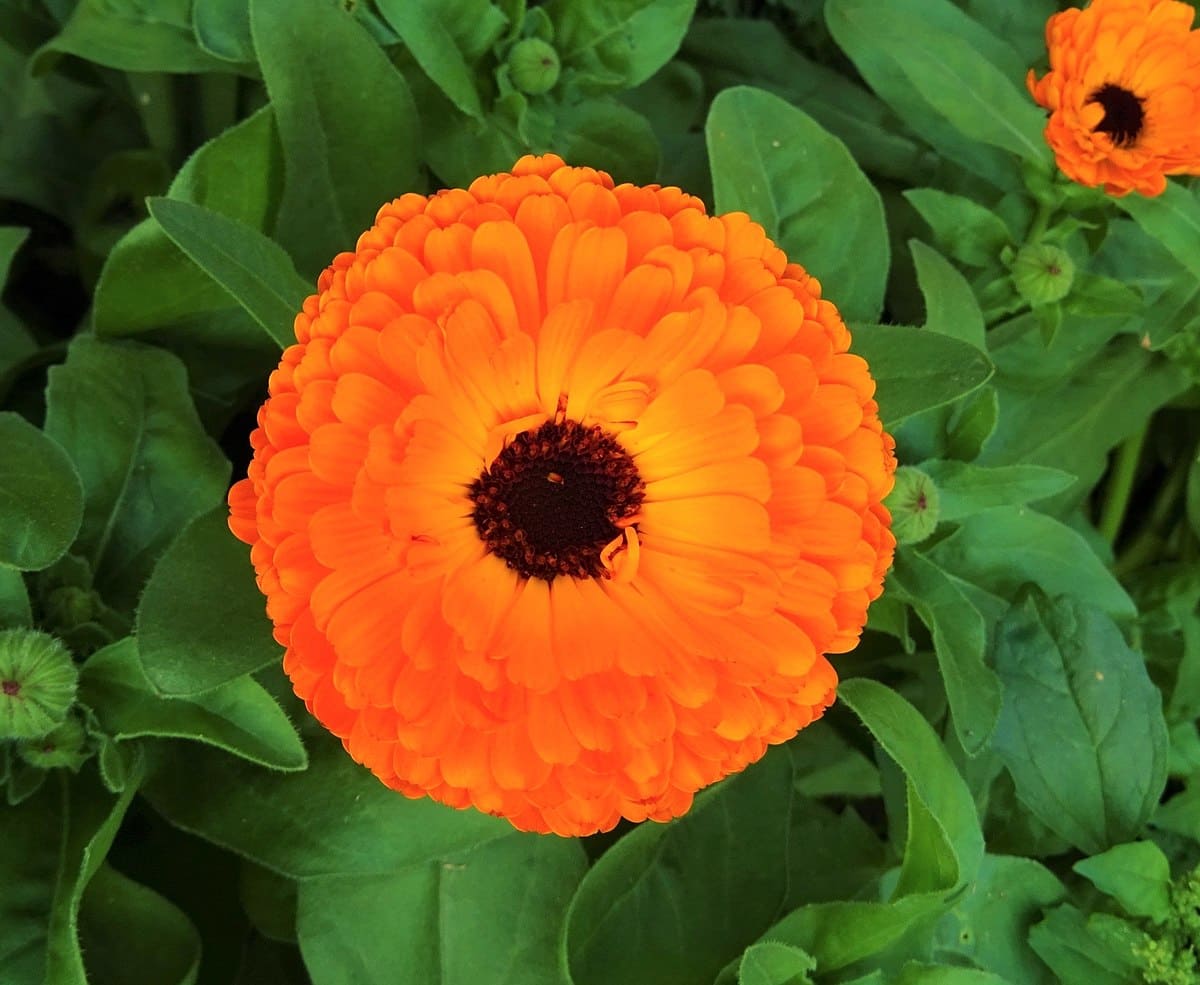
Growing tip: Deadhead regularly for continuous blooms, and don’t be afraid to harvest heavily—the more you pick, the more they produce.
Find out When and How to Deadhead Cosmos for Continuous Blooms
Herb Garden Superstars
4. Chive Blossoms (Allium schoenoprasum)
Flavor Profile: Mild onion
These purple pompoms are one of spring’s first gifts. I separate the individual florets and sprinkle them over potato salad, cream cheese spreads, and egg dishes. The flowers have a gentler onion flavor than the leaves, making them perfect for delicate applications.

5. Basil Flowers (Ocimum basilicum)
Flavor Profile: Concentrated basil essence
Many gardeners pinch off basil flowers to encourage leaf growth, but I let a few plants bloom specifically for their edible flowers. They’re incredibly potent—a few petals can flavor an entire dish. Particularly stunning with purple basil varieties.
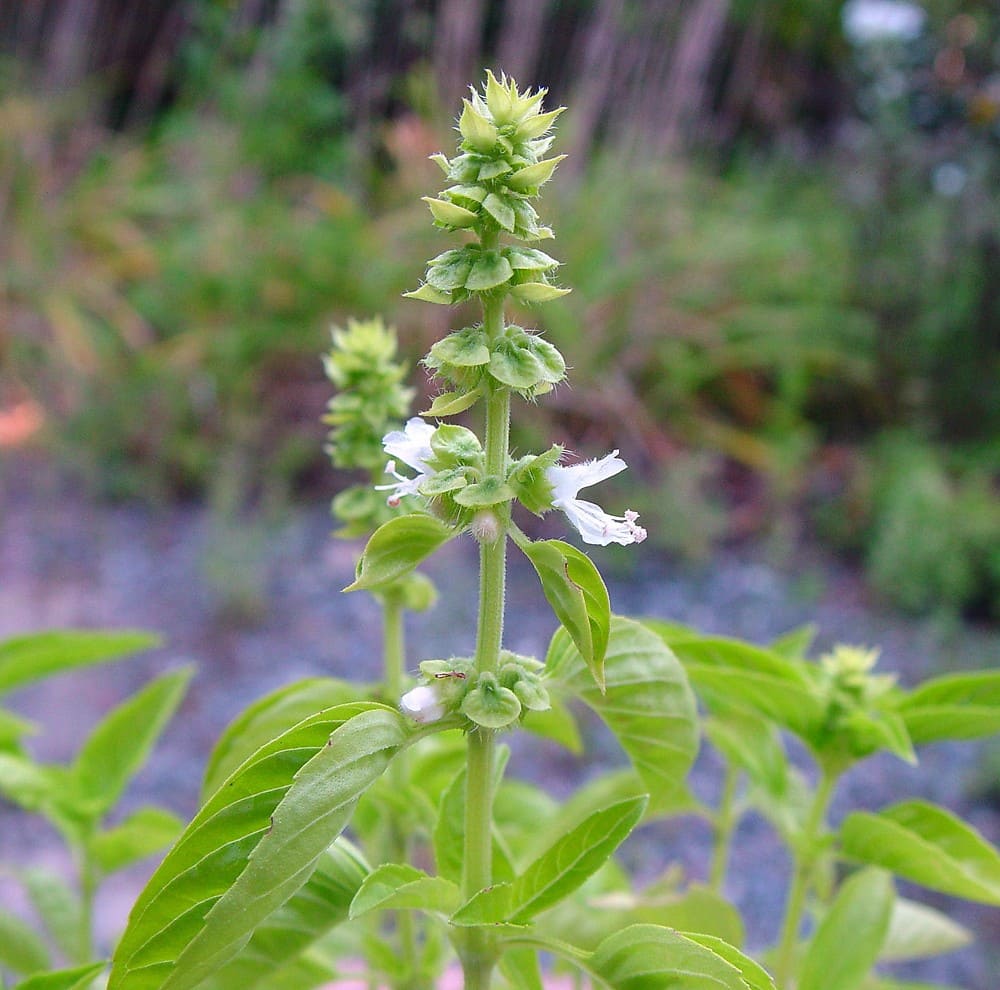
Explore the Best Types of Basil to Grow and Spice Up Your Herb Garden
6. Lavender (Lavandula angustifolia)
Flavor Profile: Floral, perfumed (use sparingly)
English lavender is the only variety I recommend for culinary use—other types can taste soapy. A little goes a long way. I infuse simple syrup with lavender flowers for cocktails and desserts, creating an elegant floral note that guests always remember.
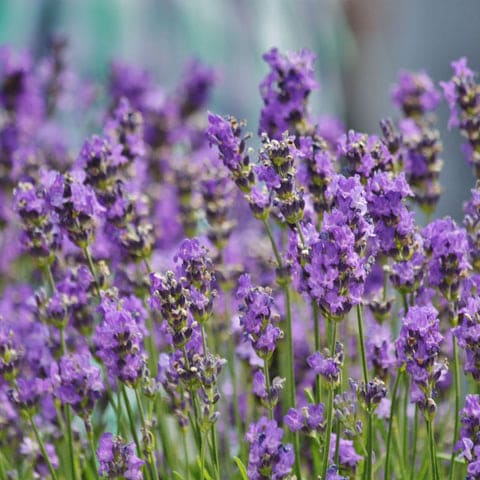
7. Rosemary Flowers (Rosmarinus officinalis)
Flavor Profile: Milder than leaves, sweet-woody
These tiny blue flowers appear in winter and early spring, providing fresh herbs when little else is growing. I use them to garnish roasted vegetables and Mediterranean dishes.

Explore the Best Herbs for Cut Flower Gardens: 12 Essential Varieties to Grow
Vegetable Garden Treasures
8. Squash Blossoms (Cucurbita species)
Flavor Profile: Mild, slightly sweet
These golden beauties are the crown jewels of the vegetable garden. Harvest male flowers (they have thin stems) to avoid reducing your squash harvest. Stuffed with ricotta and herbs, then lightly battered and fried, they’re absolutely divine.
Professional tip: Pick blossoms in the morning when they’re fully open, and use them the same day for best flavor and texture.

9. Arugula Flowers (Eruca sativa)
Flavor Profile: Peppery, like the leaves but milder
When arugula bolts in summer heat, don’t pull it up—let it flower! The small white blooms have the same peppery punch as the leaves but with a delicate texture perfect for garnishing.

10. Pea Flowers (Pisum sativum)
Flavor Profile: Sweet, pea-like
These delicate flowers taste exactly like tender peas. I add them to spring salads and use them to garnish pea soup. Note: Only true garden pea flowers are edible—sweet pea flowers are toxic.

Here’s How to Create a Fun and Educational Vegetable Garden for Kids
Perennial Powerhouses
11. Rose Petals (Rosa species)
Flavor Profile: Varies by variety—sweet to spicy
All roses are edible, but fragrant varieties offer the best flavor. I grow David Austin roses specifically for culinary use, as they combine exceptional fragrance with disease resistance. Rose petals can be candied, made into syrup, or used fresh in fruit salads.

Growing insight: The darker the petals, typically the more intense the flavor. Always remove the bitter white heel at the base of each petal.
Here’s How to Prune Roses with A Simple Guide for Stunning Results
12. Bee Balm (Monarda didyma)
Flavor Profile: Citrusy, minty
Also called bergamot, this native North American plant produces spectacular firework-shaped blooms beloved by pollinators. The red varieties traditionally have the best flavor. I dry the petals to make a tea that tastes remarkably similar to Earl Grey.
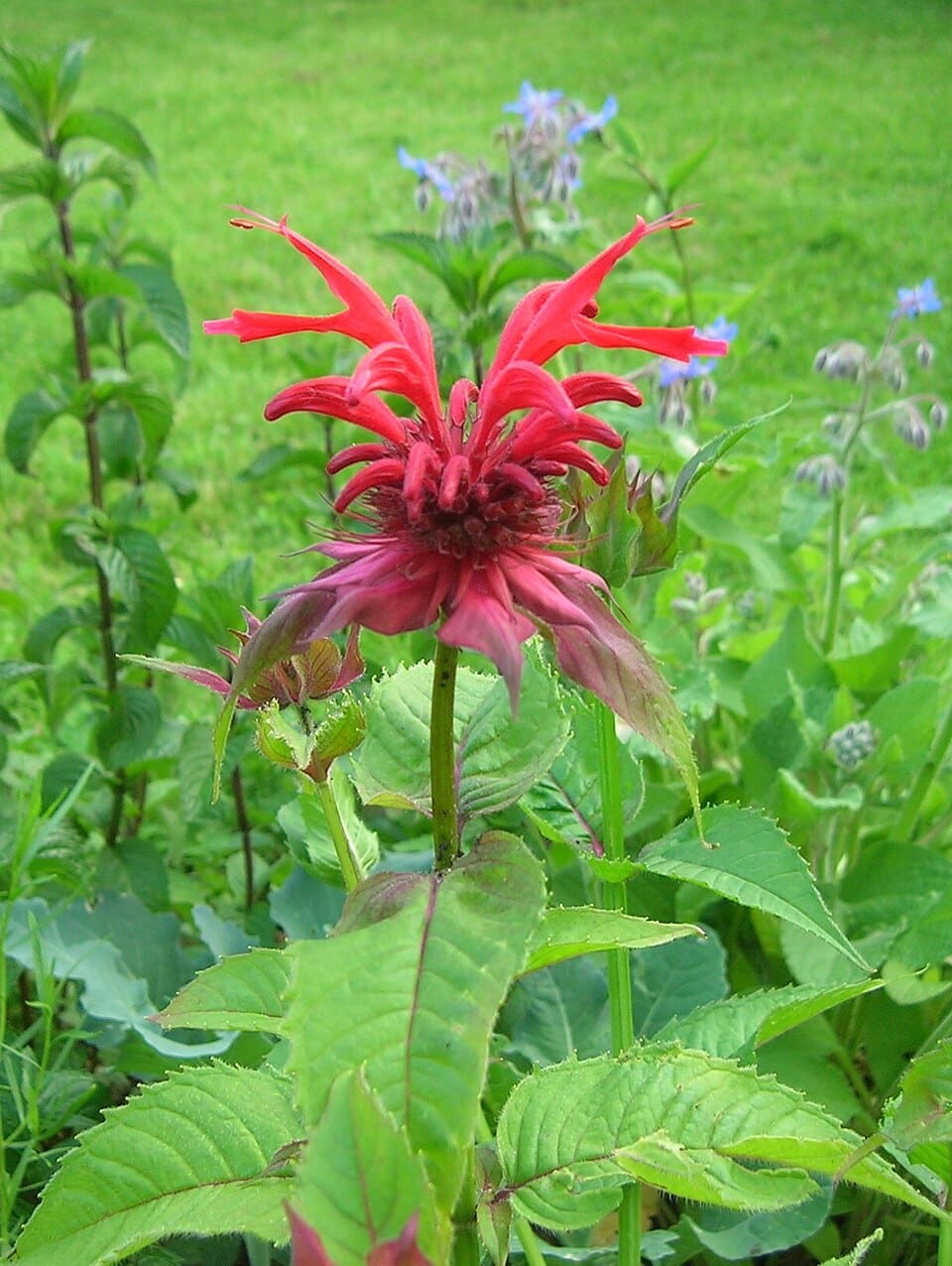
13. Day Lilies (Hemerocallis species)
Flavor Profile: Buds taste like green beans; flowers are milder
These reliable perennials offer multiple harvests—buds, flowers, and even young shoots are edible. I pick the buds just before they open and stir-fry them like green beans. The opened flowers make beautiful edible bowls for serving ice cream or fruit salad.
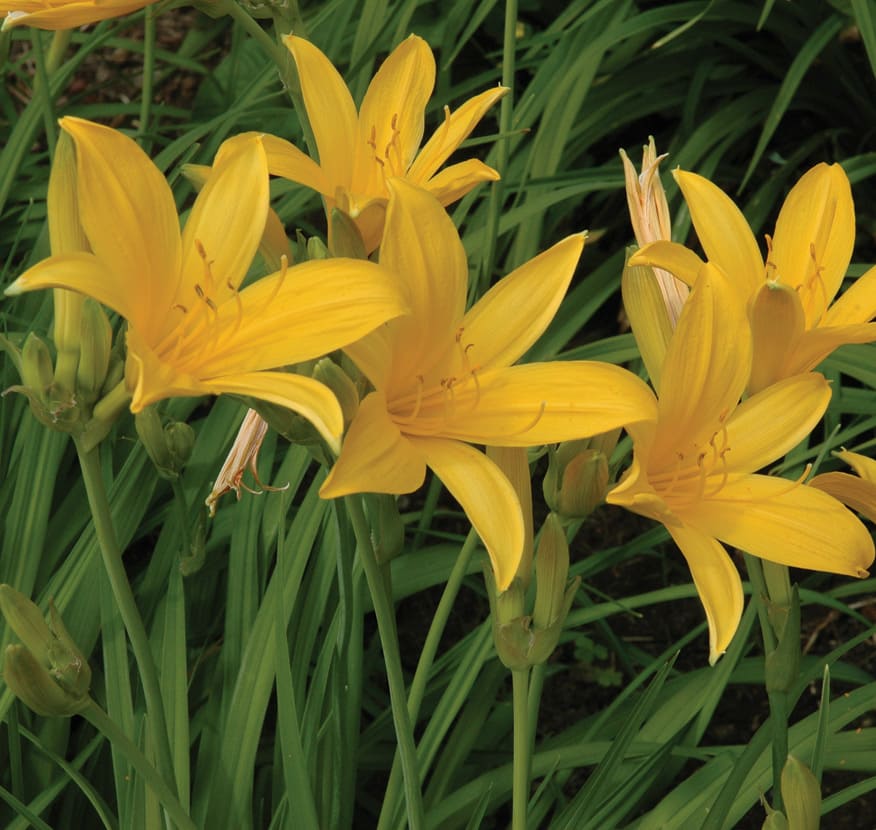
Find out How and Why to Deadhead Daylilies for Boosting Blooms
Annual Showstoppers
14. Sunflowers (Helianthus annuus)
Flavor Profile: Nutty
Both the petals and unopened buds are edible. I harvest the buds when they’re about 3 inches across and steam them like artichokes—the flavor is remarkably similar. The petals add color and mild flavor to salads.
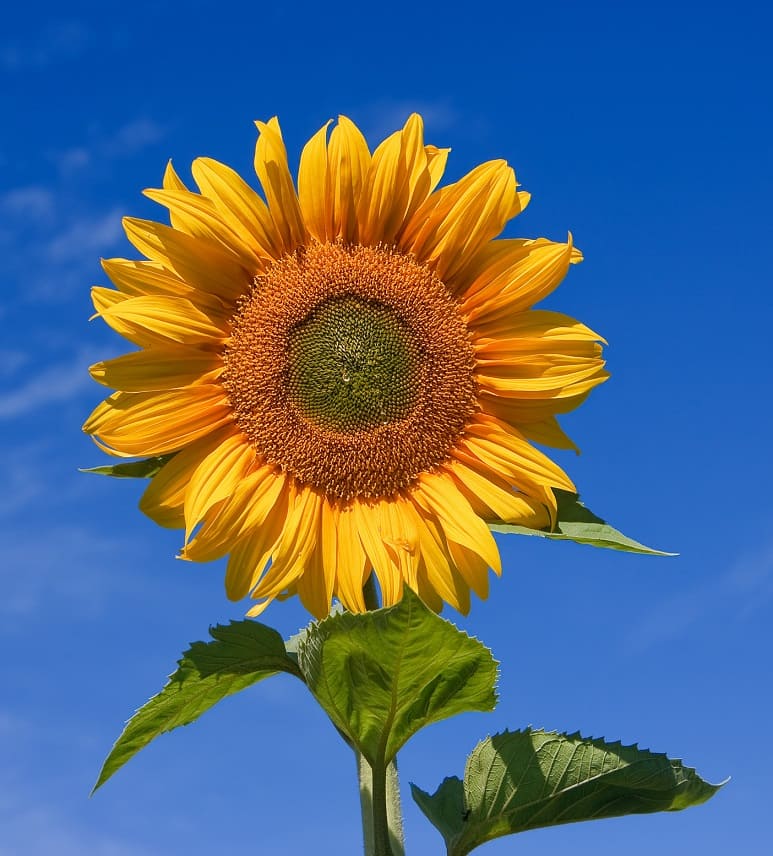
Here’s How to Grow Giant Sunflowers With Expert Tips for Towering Blooms
15. Borage (Borago officinalis)
Flavor Profile: Cucumber-like
These star-shaped blue flowers are absolutely stunning frozen in ice cubes for summer drinks. The entire plant self-seeds enthusiastically, so you’ll have volunteers for years to come. Both flowers and leaves are edible, though the leaves can be prickly.

16. Marigolds (Tagetes species)
Flavor Profile: Citrusy, slightly bitter
Choose signet marigolds (Tagetes tenuifolia) for the best flavor—varieties like ‘Lemon Gem’ and ‘Tangerine Gem’ have excellent citrus notes. Avoid larger African and French marigolds, which can be overwhelmingly pungent.
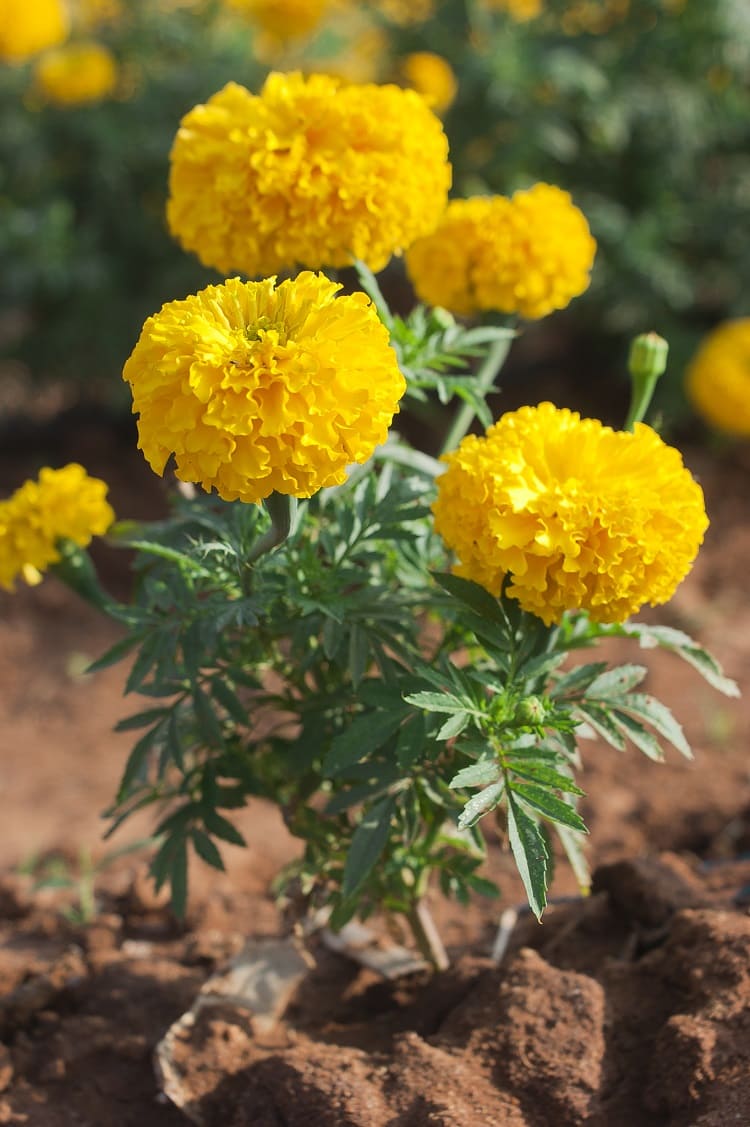
Find out Why Marigolds Are the Ultimate Companion Plant for Your Garden
Unique Specialty Flowers
17. Hibiscus (Hibiscus rosa-sinensis)
Flavor Profile: Tart, cranberry-like
These tropical beauties produce flowers as large as dinner plates. The petals make a gorgeous ruby-red tea with a tart, refreshing flavor. In warm climates, they bloom year-round.
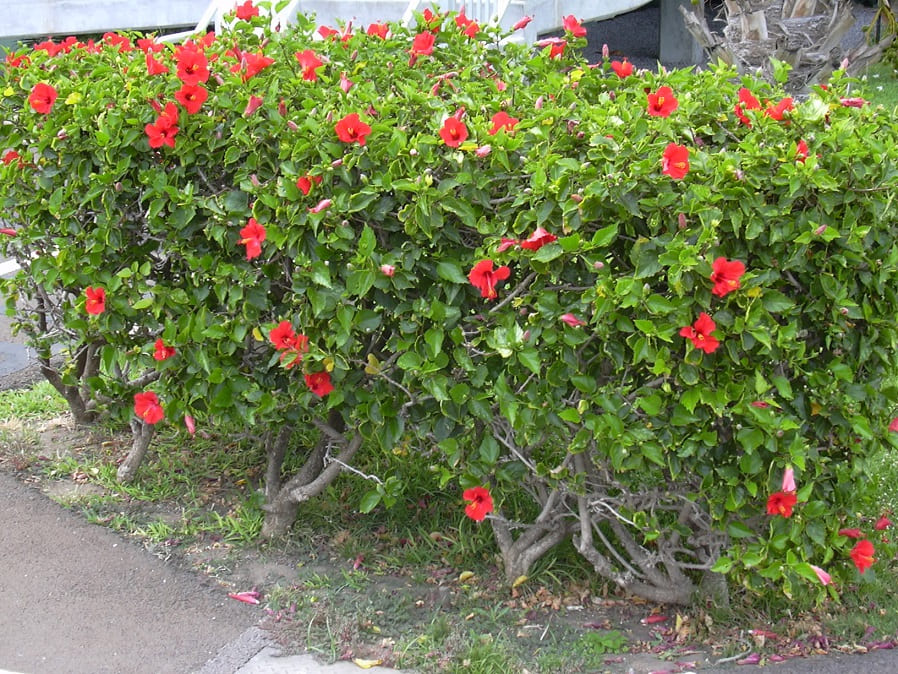
18. Chamomile (Matricaria chamomilla)
Flavor Profile: Sweet, apple-like
German chamomile is the variety to grow for tea. The tiny daisy-like flowers have an apple scent that’s incredibly soothing. I harvest flowers when they’re just fully open and dry them for winter tea.
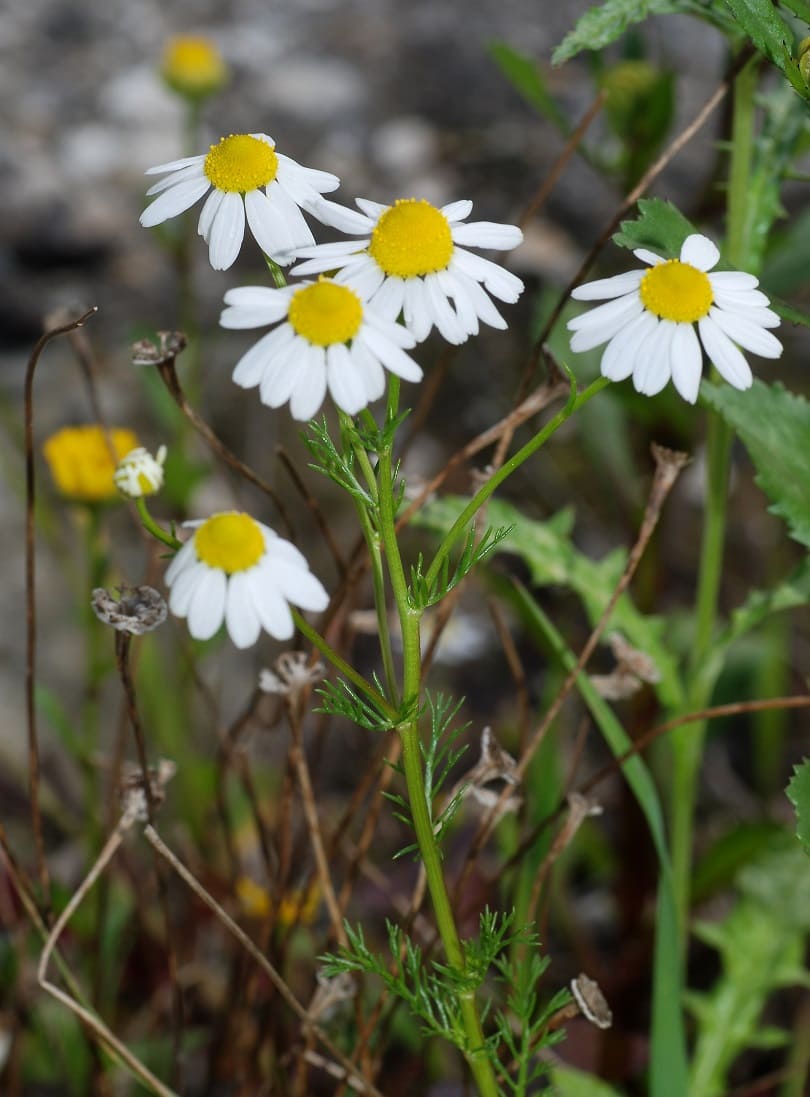
19. Anise Hyssop (Agastache foeniculum)
Flavor Profile: Licorice-like
These purple-blue flower spikes are magnets for pollinators and have a delightful anise flavor. Both flowers and leaves make excellent tea. The plant is perennial in most zones and will self-seed readily.
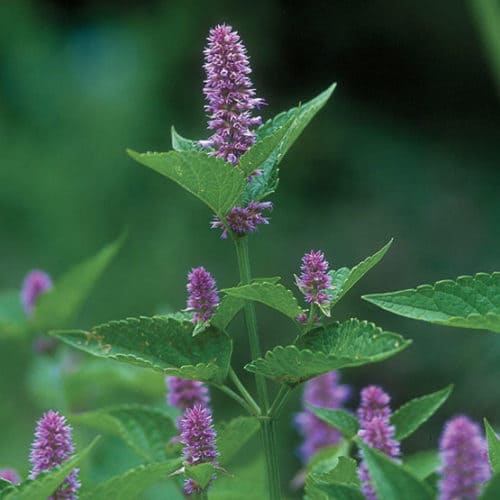
Here’s How to Grow and Care for Hummingbird Mint (Agastache)
Traditional Favorites
20. Dandelions (Taraxacum officinale)
Flavor Profile: Sweet when young, bitter when mature
Before you curse these “weeds,” consider their culinary potential! Young dandelion flowers have a honey-like sweetness perfect for jellies and wines. Every part is edible—flowers, leaves, and roots. Always harvest from untreated areas only.
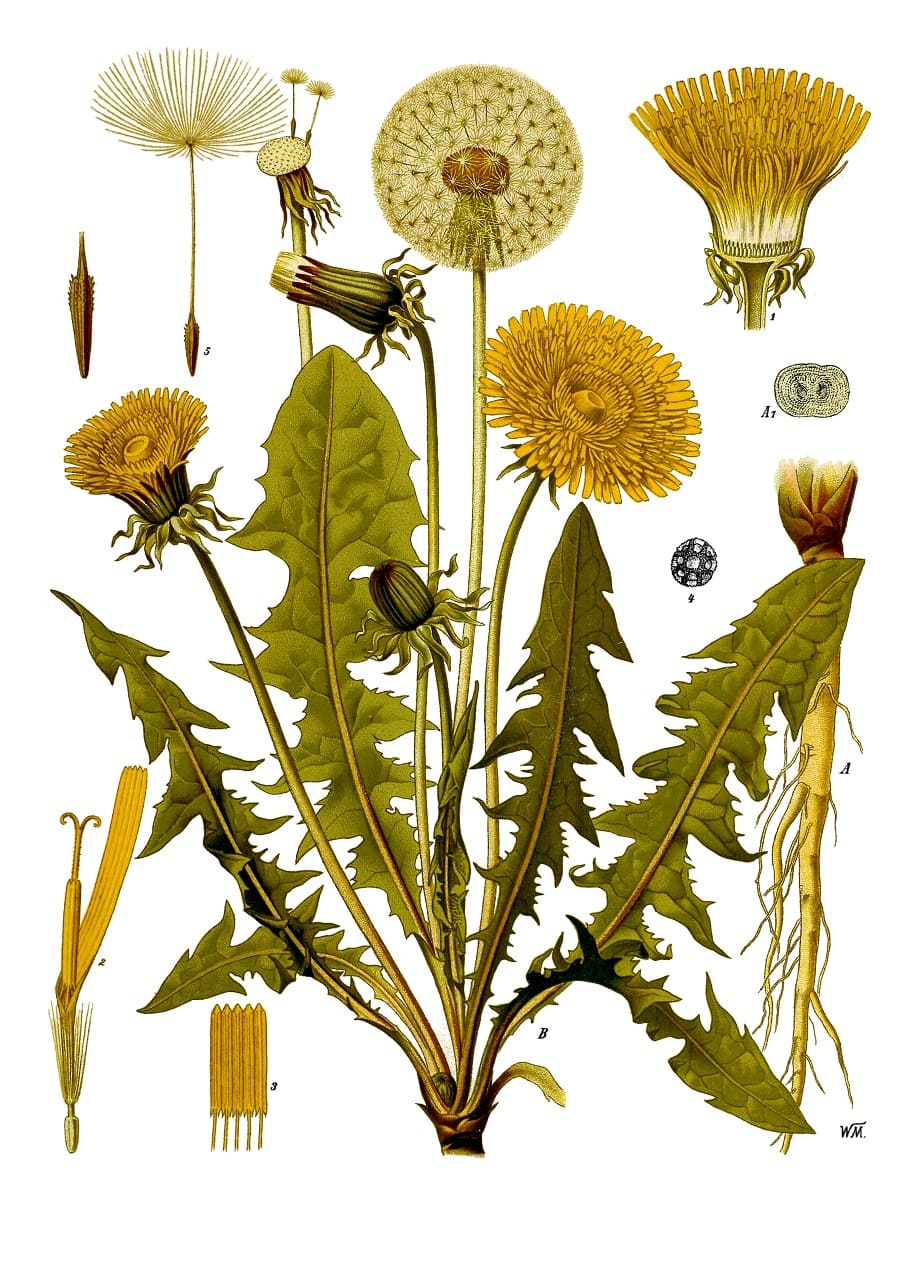
Discover the Benefits of Dandelions: Why This ‘Weed’ Deserves a Place in Your Garden
21. Elderflower (Sambucus nigra)
Flavor Profile: Sweet, perfumed, muscat-like
These creamy white flower clusters create some of the most elegant flavored syrups and cordials. I harvest them in late spring when the scent is most intense. Always cook elderflowers before consuming—never eat them raw.
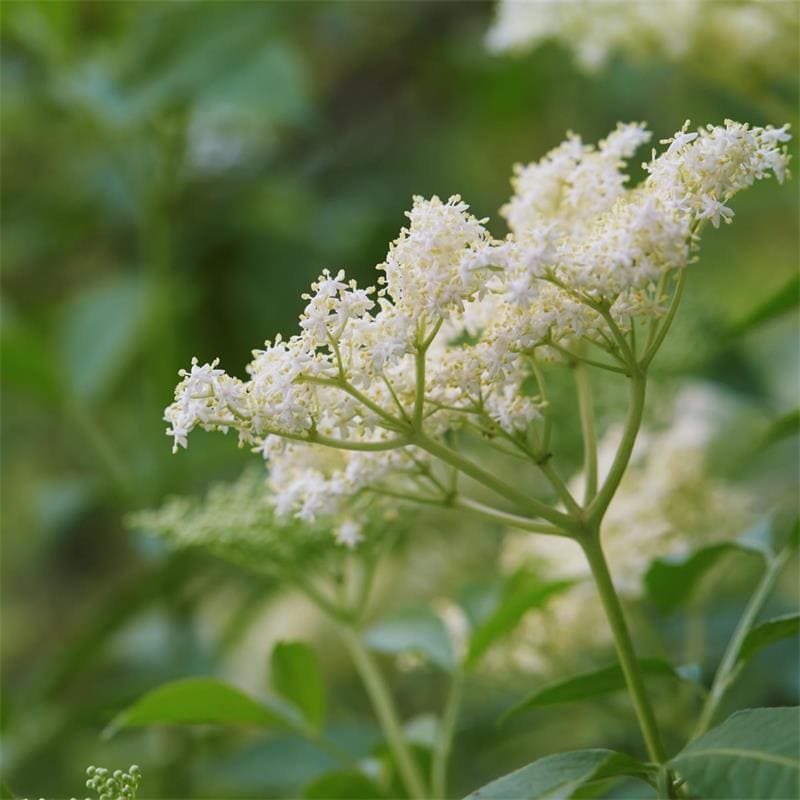
22. Johnny Jump-Ups (Viola tricolor)
Flavor Profile: Mild mint, grassy
These wild ancestors of pansies have charming tri-colored faces and readily self-seed throughout the garden. They’re hardier than garden pansies and bloom longer in challenging conditions.
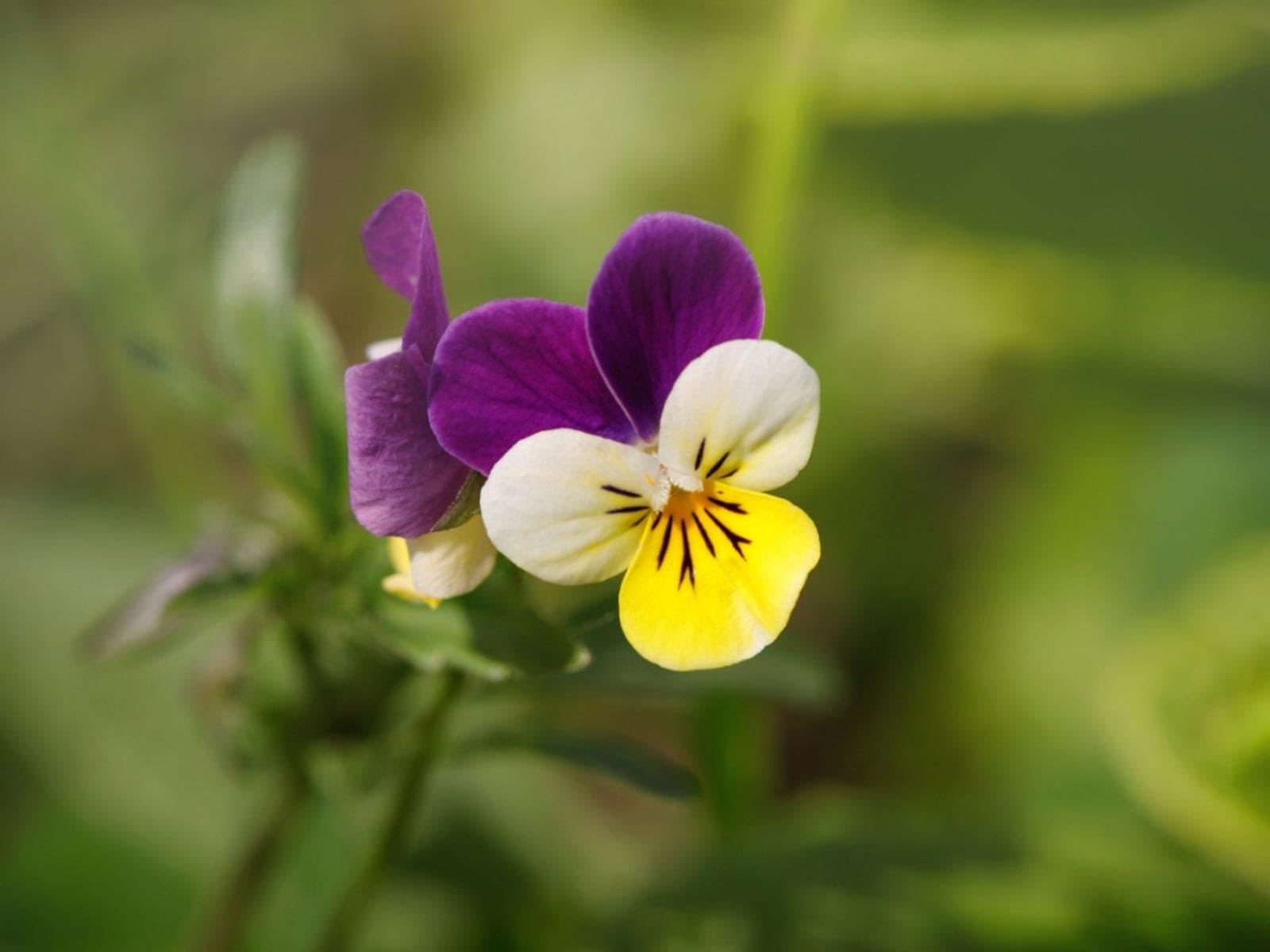
23. Hollyhocks (Alcea rosea)
Flavor Profile: Mild, lettuce-like
These cottage garden classics produce towers of colorful flowers perfect for crystallizing. Remove all pollen before eating, as it can be quite bitter. The large petals make beautiful edible decorations for cakes.
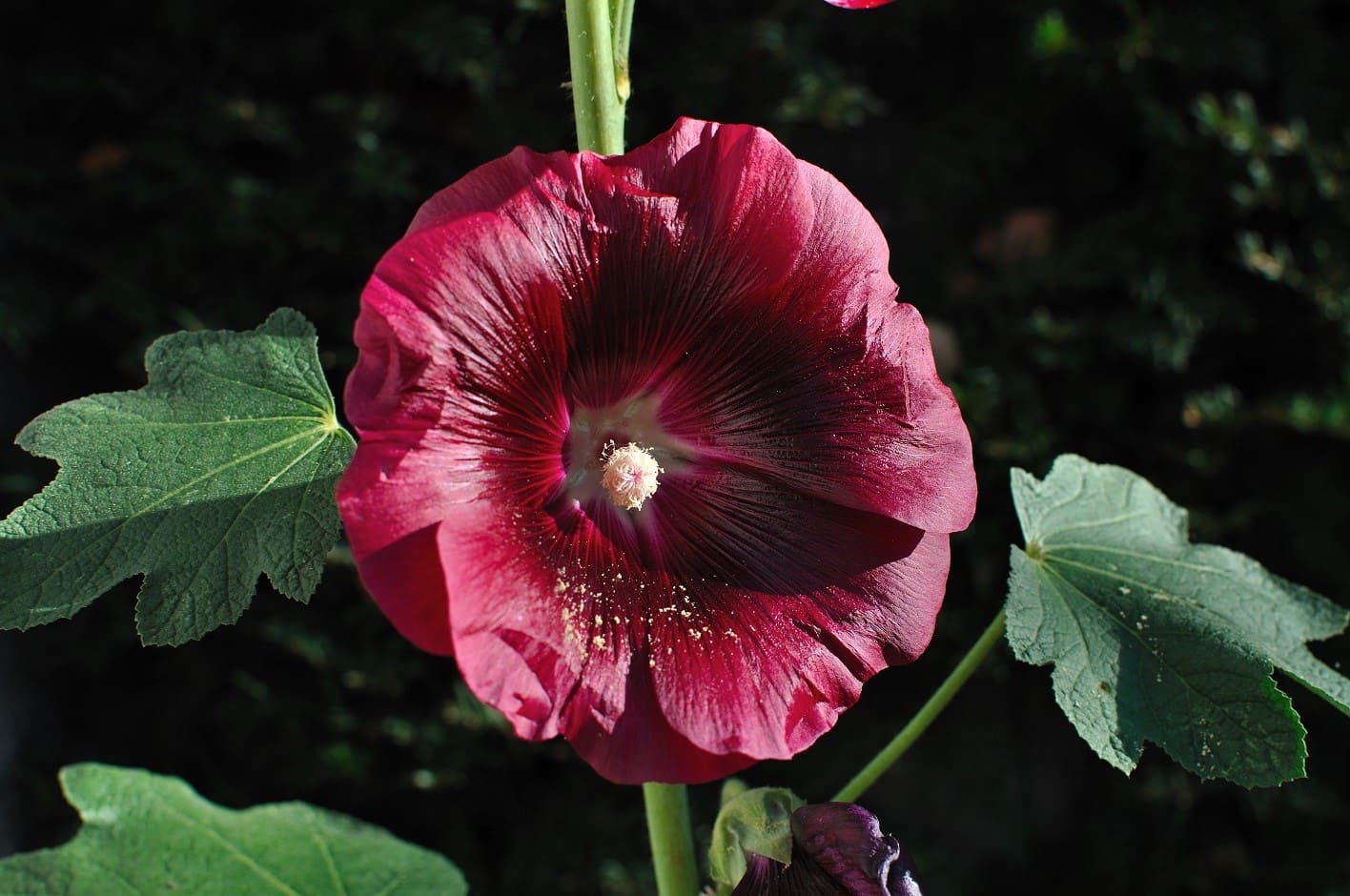
24. Mint Flowers (Mentha species)
Flavor Profile: Concentrated mint essence
Any mint variety produces edible flowers—spearmint, peppermint, apple mint, chocolate mint. The flowers pack more concentrated flavor than the leaves. Excellent frozen in ice cubes or dried for tea blends.
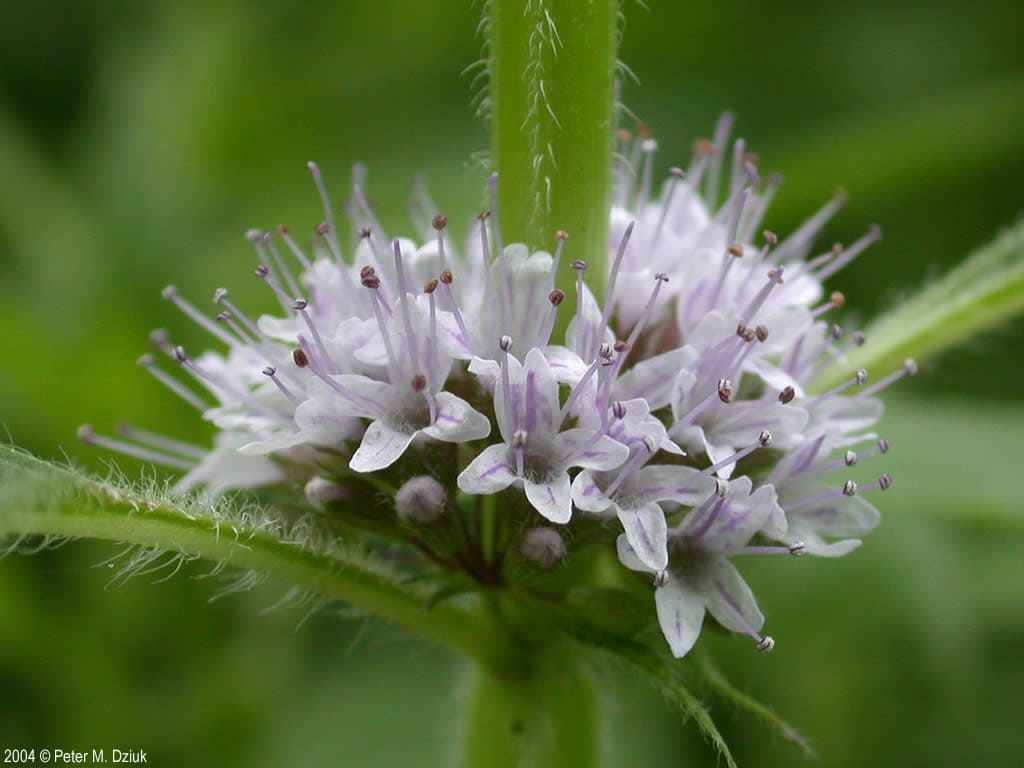
Here’s How to Grow Mint: A Complete Guide to Cultivating This Versatile Herb
25. Begonia (Begonia x tuberhybrida)
Flavor Profile: Citrusy, crisp texture
Tuberous begonia petals have a delightful lemony taste and surprisingly crisp texture. Only the petals are edible—avoid other parts. These work beautifully in fruit salads and as garnishes for desserts.
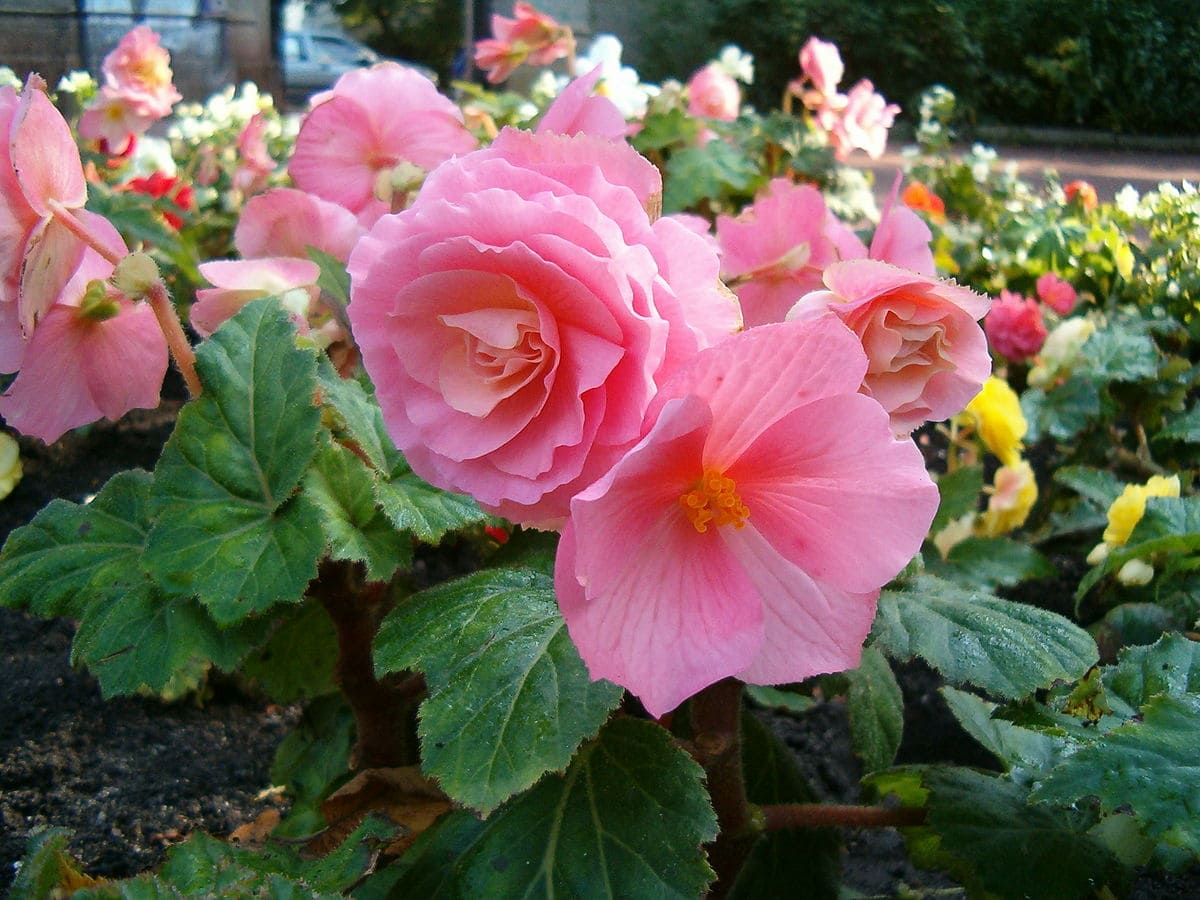
Creating Your Edible Flower Garden
The beauty of edible flowers lies in their versatility—they can be tucked into any garden style or grown in containers on the smallest balcony. Here’s how to plan your edible flower paradise:
Location and Site Preparation
Most edible flowers thrive in full sun (6-8 hours daily) with well-draining soil. However, some varieties like violas and begonias tolerate partial shade, making them perfect for challenging spots.
Soil preparation: Unlike vegetables that need rich, heavily amended soil, many edible flowers prefer moderate fertility. Nasturtiums, calendula, and borage actually bloom better in slightly poor soil.
Here’s How to Prepare Land for Planting With A Comprehensive Guide for Gardeners and Farmers
Succession Planting for Continuous Harvest
Plant cool-season flowers like pansies, calendula, and chamomile in early spring and again in late summer for fall blooms. Warm-season flowers like nasturtiums, sunflowers, and marigolds should be planted after the last frost date.
Pro tip: Stagger plantings of quick-growing annuals like calendula every 2-3 weeks for continuous blooms throughout the season.
Related post: Year-Round Cut Flower Farming: Season Extension Guide for Growers
Companion Planting Benefits
Many edible flowers serve double duty as beneficial companions:
- Nasturtiums attract aphids away from vegetables (trap cropping)
- Marigolds repel various garden pests
- Borage improves the flavor of tomatoes planted nearby
- Calendula attracts beneficial insects that control pests
Container Growing for Small Spaces
Every edible flower in this guide can be grown successfully in containers. Use these guidelines:
- Small flowers (violas, chamomile): 6-8 inch pots
- Medium flowers (nasturtiums, calendula): 10-12 inch pots
- Large flowers (sunflowers, hibiscus): 18+ inch containers
Choose containers with drainage holes and use high-quality potting mix rather than garden soil.
Read the Delayed Planting Guide: Tips for Successful Container Tree Care
Harvesting: Timing Is Everything
The secret to exceptional flavor and maximum nutrition lies in harvesting at precisely the right moment. Here’s what I’ve learned from years of trial and (sometimes bitter) error:
When to Harvest
- Best time of day: Early morning, just after dew has evaporated but before the sun gets strong. This is when essential oils are most concentrated and flowers are fully hydrated.
- Flower stage: Harvest flowers just as they fully open, not after they’ve been open for days. Older flowers often develop bitter or unpleasant flavors.
- Weather considerations: Avoid harvesting immediately after rain (flowers will be waterlogged) or during extremely hot weather (oils will be depleted).
Harvesting Techniques
- For small flowers: Use sharp scissors or pruning shears to cut stems about 1/2 inch below the flower head.
- For large flowers: Cut early in the morning when stems are most turgid. Place immediately in water.
- For petals only: Remove petals just before use to prevent wilting and nutrient loss.
Find out When and How to Harvest Vegetables for Peak Flavor: Timing and Tips for Every Crop
Post-Harvest Handling
- Inspect thoroughly for insects—a gentle shake outside usually encourages them to leave
- Rinse gently in cool water only if necessary (many flowers are delicate)
- Dry carefully on paper towels or clean kitchen towels
- Use immediately for best flavor and nutrition
Further reading for Mastering Flower Farming Economics: A Comprehensive Guide to Budgeting and Profit Forecasting
Storage and Preservation: Making the Harvest Last
Fresh edible flowers are always best, but several preservation methods can extend your harvest:
Short-Term Storage (1-3 days)
- Refrigerator method: Layer flowers between damp paper towels in a sealed container. Check daily and remove any wilted flowers to prevent deterioration of the whole batch.
- Water method: For sturdy flowers with stems, place in a glass of water like a bouquet, cover with a plastic bag, and refrigerate.
Long-Term Preservation
- Drying: Spread flowers on screens in a warm, dry, dark location with good air circulation. Perfect for chamomile, lavender, and bee balm. Properly dried flowers retain flavor for up to one year.
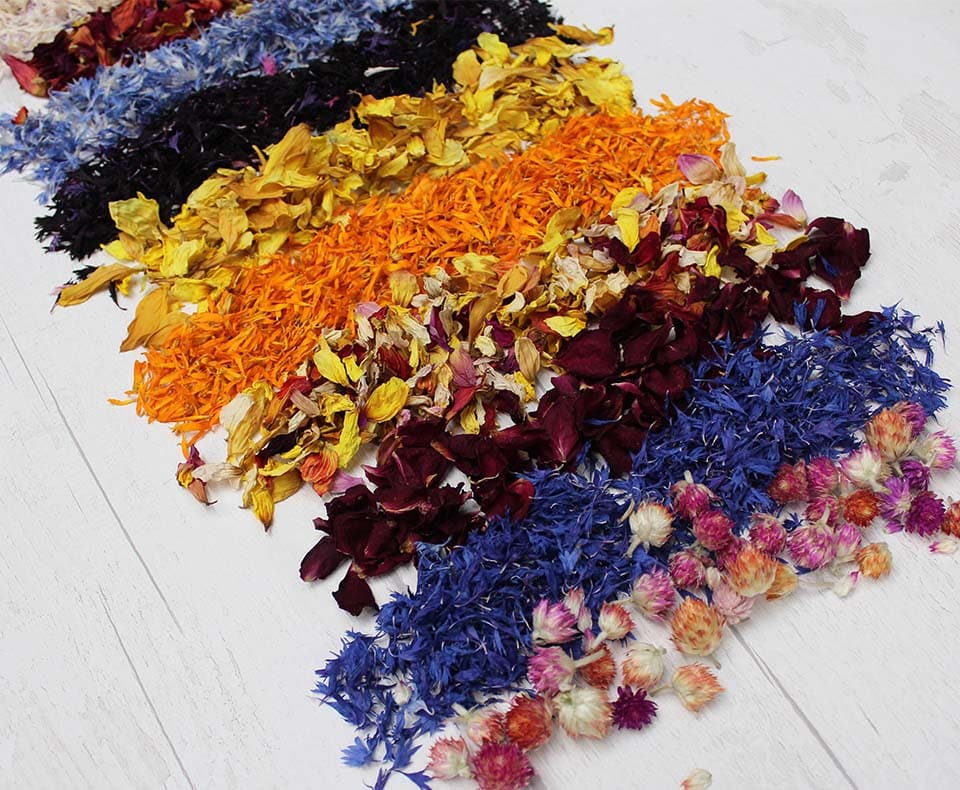
Here’s How to Dehydrate Apples at Home With Easy Steps for Perfect Results.
- Freezing in ice cubes: Freeze individual flowers in ice cube trays with water or herb-infused simple syrup. Perfect for borage, violas, and small rose petals.
- Flower vinegars: Infuse white wine vinegar with fresh flowers for 2-4 weeks. Strain and store in dark bottles. Chive blossom vinegar is particularly delicious.
- Crystallizing: Brush petals with egg white, dust with superfine sugar, and dry on parchment paper. Store in airtight containers for up to 6 months.
Culinary Applications: From Simple to Spectacular
The key to cooking with edible flowers is understanding that they’re seasonings first, decorations second. Here are my favorite applications:
Everyday Uses
- Salad enhancers: Scatter petals over mixed greens for instant color and subtle flavor. Nasturtiums and calendula are particularly good for this.
- Herb butters: Fold minced chive blossoms or rose petals into softened butter for bread or vegetable finishing.
- Finishing touches: Sprinkle flower petals over soups just before serving—the heat will release their aromatics beautifully.
Beverage Magic
- Flower ice cubes: Freeze individual flowers in ice cube trays for stunning cocktail garnishes.

- Herbal teas: Chamomile, bee balm, and hibiscus make exceptional herbal teas, either alone or blended with traditional teas.
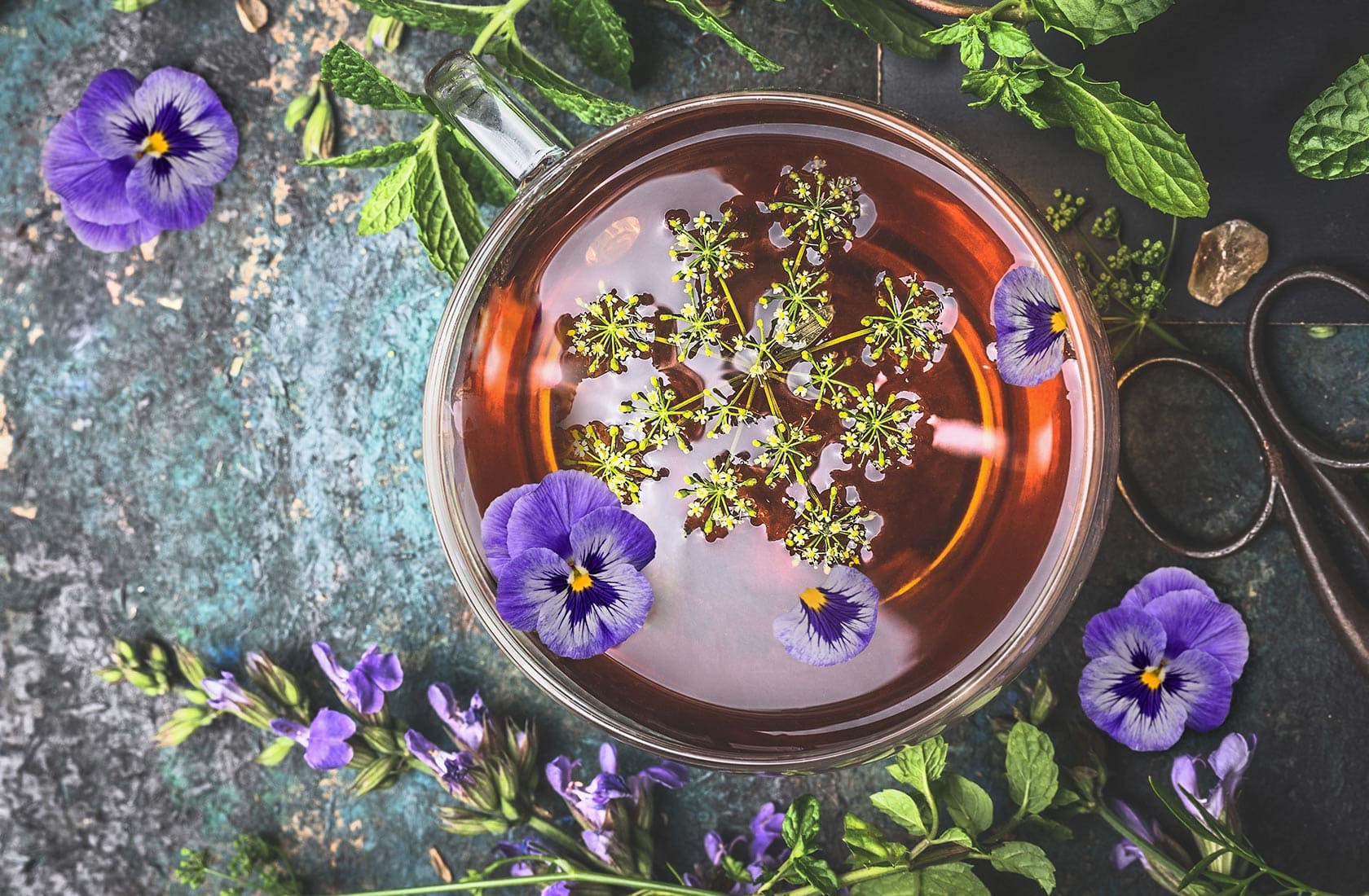
- Infused syrups: Create simple syrups infused with lavender, rose, or elderflower for cocktails and desserts.
Read about Freeze Concentration: A Game-Changer for Maple Syrup Makers
Advanced Techniques
- Flower oils: Gently warm neutral oil with fresh flowers for 20 minutes, strain, and use for finishing dishes.
- Floral salts: Layer coarse sea salt with dried flowers in a jar for 2-3 weeks, then sift out flower bits.
- Flower sugars: Process dried flowers with granulated sugar in a food processor for naturally flavored sugar.
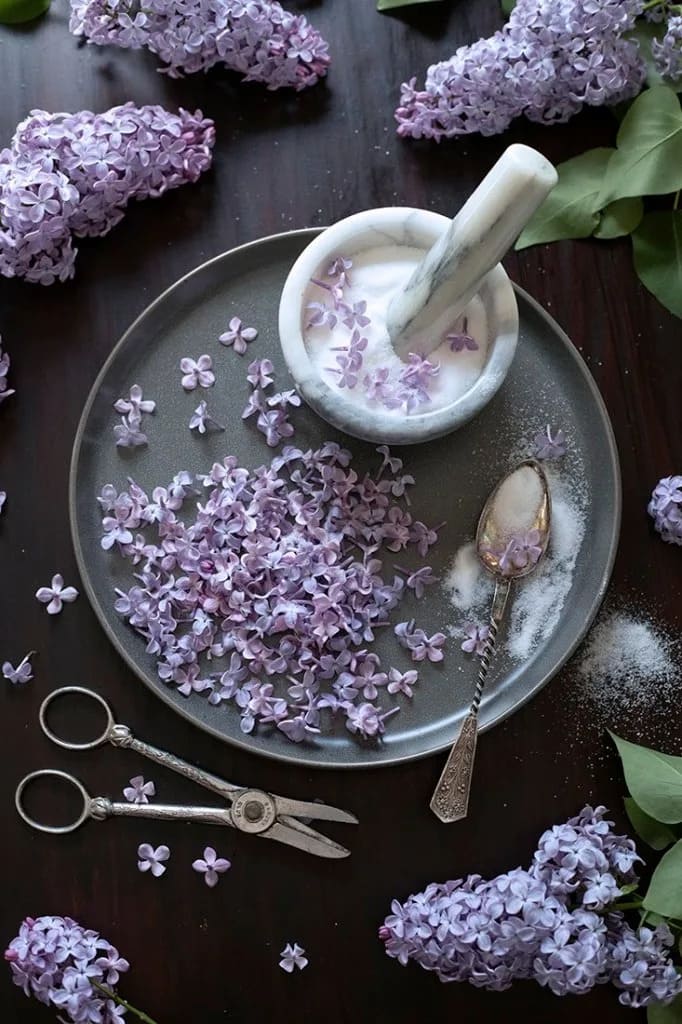
Health Benefits: Beauty and Nutrition Combined
Edible flowers aren’t just pretty faces—many pack impressive nutritional and therapeutic benefits:
Antioxidant Powerhouses
Many edible flowers contain high levels of antioxidants, particularly:
- Anthocyanins (in purple/blue flowers like violas and borage)
- Carotenoids (in yellow/orange flowers like calendula and nasturtiums)
- Flavonoids (present in most edible flowers)
Specific Health Benefits
- Hibiscus: Studies suggest it may help lower blood pressure and cholesterol levels.
- Chamomile: Well-documented calming and digestive benefits; traditionally used for sleep and anxiety.
- Rose hips and petals: Exceptional vitamin C content—higher than citrus fruits.
- Lavender: Research indicates potential benefits for anxiety and sleep quality.
- Nasturtiums: High in vitamin C and natural antibiotic compounds.
Important Disclaimers
While edible flowers can contribute to a healthy diet, they shouldn’t be considered medicine. Always consult healthcare providers before using flowers for therapeutic purposes, especially if you’re pregnant, nursing, or taking medications.
Creative Inspiration: Beyond the Basics
After mastering the fundamentals, these creative applications will elevate your flower cookery to new heights:
Artistic Presentations
- Flower garnish platters: Create stunning cheese boards using a variety of edible flowers as natural garnishes.
- Layered flower salads: Build salads in clear glass bowls, layering different colored flowers between greens for a stunning visual effect.
- Flower-pressed appetizers: Press flowers into soft cheeses or butter, then slice to reveal beautiful flower cross-sections.
Seasonal Celebrations
- Spring: Violet and dandelion petal salads, chive blossom vinaigrettes
- Summer: Nasturtium and borage cocktails, squash blossom fritters
- Fall: Rose hip jellies, calendula rice dishes
- Winter: Dried flower tea blends, crystallized flower decorations
Gift Ideas
- Flower-infused vinegars in beautiful bottles
- Homemade flower teas in decorative tins
- Crystallized flowers in elegant boxes
- Flower salt blends in small jars
Frequently Asked Questions
- Q: Can I eat flowers from my regular garden plants?
A: Only if you’re absolutely certain they’re edible varieties and haven’t been treated with pesticides. When in doubt, start a separate edible flower garden using organic methods.
Explore Top 44 Perennial Flowers & Plants for Year-Round Garden Color
- Q: How do I know if a flower is too old to eat?
A: Fresh edible flowers should have bright colors, firm petals, and pleasant aromas. Avoid flowers that are wilted, discolored, or have an off smell.
- Q: Can children safely eat edible flowers?
A: Yes, but with the same precautions as adults. Start with small amounts, ensure proper identification, and be extra cautious if the child has any allergies.
- Q: What’s the difference between edible and non-toxic?
A: Edible means the flower is safe to eat and potentially nutritious. Non-toxic simply means it won’t harm you but doesn’t necessarily taste good or provide nutrition.
- Q: How much of an edible flower can I safely eat?
A: Start small—a few petals or one small flower—and increase gradually. Even edible flowers can cause digestive upset if consumed in large quantities.
- Q: Can I eat flowers from plants bought at the nursery?
A: Not recommended unless they’re specifically labeled as organic or edible. Most nursery plants are treated with systemic pesticides that can’t be washed off.
Conclusion: Your Floral Journey Begins
Embarking on the journey of growing and cooking with edible flowers has been one of the most rewarding adventures of my gardening life. What began as childhood curiosity has evolved into a passion that brings joy to every meal and connects me deeper to the natural world.
The transformation isn’t just culinary—it’s personal. When you start seeing your garden as a source of both beauty and sustenance, when you realize that the same flowers that attract butterflies can also grace your dinner table, your relationship with nature deepens in profound ways.
Remember that first nervous taste of a pansy I mentioned at the beginning? That moment of discovery continues every time I try a new flower variety or find a creative way to use familiar blooms. The wonder never fades—it only grows.
Your action plan:
- Start small with 3-4 easy varieties like nasturtiums, pansies, and calendula
- Dedicate a small garden space or large container to edible flowers
- Begin with simple applications—salad garnishes and herb butters
- Document your experiences and flavor discoveries
- Share your creations with friends and family (they’ll be amazed!)
The world of edible flowers is vast and exciting, filled with endless possibilities for creativity and discovery. Whether you have a sprawling garden or a tiny balcony, whether you’re a seasoned cook or a complete beginner, there’s a place for you in this beautiful, delicious world.
So go ahead—plant that first seed, pick that first flower, take that first taste. Your garden—and your kitchen—will never be the same.
What edible flower will you try first? Share your floral adventures and discoveries—I’d love to hear about your journey into this beautiful, delicious world!
About the Author: This comprehensive guide combines decades of hands-on experience with extensive research into the culinary and horticultural aspects of edible flowers. Safety information has been verified through multiple authoritative sources, and all growing advice is based on real-world testing in various climate zones.
